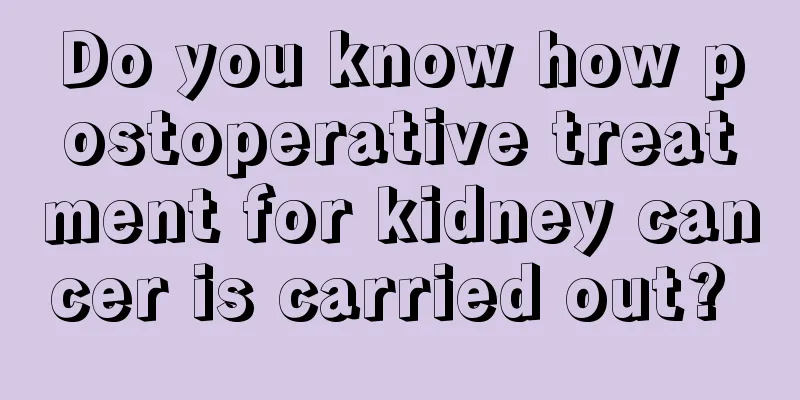What are the functions of neurotransmitters in the brain?

|
As we all know, there are a lot of nerves distributed in the human body. The reason why people can do many things in an orderly manner and the reason why human behavior can be controlled by the brain in an orderly manner is that neurotransmitters play an irreplaceable role in these life activities. There are many ways of human nerve transmission, such as transmission through chemical substances, so what are the uses of neurotransmitters in the brain? Use of neurotransmitters in the brain: Synthesis of transmitter Acetylcholine is synthesized from choline and acetyl-CoA under the catalysis of choline acetyltransferase (choline acetyltransferase). Since the enzyme is present in the cytoplasm, acetylcholine is synthesized in the cytoplasm and then taken up and stored by vesicles. The synthesis of norepinephrine uses tyrosine as raw material. First, dopa is synthesized under the catalysis of tyrosine hydroxylase, and then dopamine (catecholethylamine) is synthesized under the action of dopa decarboxylase (amino acid decarboxylase). These two steps take place in the cytoplasm. Dopamine is then taken up into vesicles, where it is further synthesized into norepinephrine by dopamine β-hydroxylase and stored in the vesicles. The synthesis of dopamine is exactly the same as the first two steps of norepinephrine, except that norepinephrine is no longer synthesized after dopamine enters the vesicles because the vesicles storing dopamine do not contain dopamine β-hydroxylase. The synthesis of 5-hydroxytryptamine uses tryptophan as raw material. First, 5-hydroxytryptophan is synthesized under the action of tryptophan hydroxylase, and then 5-hydroxytryptophan is synthesized into 5-hydroxytryptamine under the action of 5-hydroxytryptophan decarboxylase (amino acid decarboxylase). These two steps take place in the cytoplasm; then 5-hydroxytryptamine is taken up into vesicles and stored in the vesicles. GABA is synthesized from glutamate by catalytic decarboxylation of glutamate. The synthesis of peptide transmitters is exactly the same as that of other peptide hormones. It is regulated by genes and synthesized through translation on ribosomes. Release of transmitter When the nerve impulse reaches the terminal, the terminal generates an action potential and ion transfer Ca2+ from outside the membrane to inside the membrane, causing a certain number of vesicles to fuse tightly with the presynaptic membrane. Then a rupture appears at the adhesion between the vesicles and the presynaptic membrane, and the neurotransmitters and other contents in the vesicles are released into the synaptic cleft. The process of releasing neurotransmitters from the presynaptic membrane is called exocytosis or efflux. In this process, the transfer of Ca2+ is important. If the extracellular Ca2+ concentration is reduced, the release of neurotransmitters is inhibited; while if the extracellular Ca2+ concentration is increased, the release of neurotransmitters is increased. This fact shows that the amount of Ca2+ entering the membrane from outside is directly related to the amount of neurotransmitter released; Ca2+ is a necessary factor for the close fusion of the vesicle membrane and the presynaptic membrane. It is generally believed that Ca2+ may have two effects: ① Reduce the viscosity of the axoplasm, which is beneficial to the movement of vesicles; ② Eliminate the negative potential in the presynaptic membrane, making it easier for vesicles to contact and fuse with the presynaptic membrane. When the vesicle ruptures and releases neurotransmitters and other contents into the synaptic cleft, its outer shell can still remain in the presynaptic membrane (it can also fuse with the presynaptic membrane and become a component of the presynaptic membrane), and can later return to its original state and continue to synthesize and store neurotransmitters. The exocytosis of synaptic vesicles to the restoration of vesicle membrane can be divided into the following six phases: ① Synaptic vesicles approach the active zone of the presynaptic membrane; ② Vesicles adhere to the synaptic fence structure; ③ The vesicle contacts the presynaptic membrane and the two membranes fuse; ④ The fusion membrane splits and releases neurotransmitters into the synaptic cleft; ⑤ The vesicle membrane is incorporated into the presynaptic membrane; ⑥The bubble membrane is recovered and reused. During the recycling process of vesicle membranes, some membranes do not form functional vesicles and do not enter the circulation. Instead, they are degraded by lysosomes and returned to the cell body for reprocessing through reverse axoplasmic transport. At the same time, new vesicles are delivered to nerve terminals via anterograde axoplasmic transport. After being released from the presynaptic membrane, neurotransmitters immediately bind to the corresponding postsynaptic membrane receptors, generating a synaptic depolarization potential or hyperpolarization potential. Resulting in an increase or decrease in the excitability of the postsynaptic nerve. From then on, the electrical signal of the nerve impulse has completed a crossing between synapses. |
>>: What's wrong with sweating, dizziness and discomfort
Recommend
Which hospital is good for treating fibroids
Which hospital is good for treating fibroids? Wit...
The flesh on both sides of the shoulders is very thick
Thick flesh on both sides of the shoulders will g...
Symptoms of prostate cancer early symptoms
The early symptoms of prostate cancer may not be ...
My hands are broken from washing people's hair all day. What medicine should I use?
Some people like to take care of their hair very ...
Which types of hepatitis C are the most difficult to treat?
Hepatitis C is a type of disease that occurs worl...
The difference between persimmon and tomato
Persimmon is a common fruit. The best season for ...
Can I eat kelp if I have renal insufficiency? 5 kinds of kidney-tonifying foods
The kidney is one of the most important organs in...
Can I eat sweet potatoes during menstruation?
The menstrual period is a relatively important pe...
Changes in patients' bowel habits are common late-stage colon cancer symptoms
Because the symptoms of advanced colon cancer hav...
What is the cause of axillary folliculitis
Folliculitis is a common clinical disease. This d...
What medicine can reduce swelling of feet
The feet are a part of the body that is particula...
What are the side effects of taking Diane on the body
Many women very much hope to have their own baby,...
The efficacy of Angelica dahurica honey mask
Everyone likes to use some things to make homemad...
How long does Korean double eyelids last
Everyone wants to have big eyes. The size of the ...
What are the harms of angiography to the body
As people's living standards improve, they pa...









